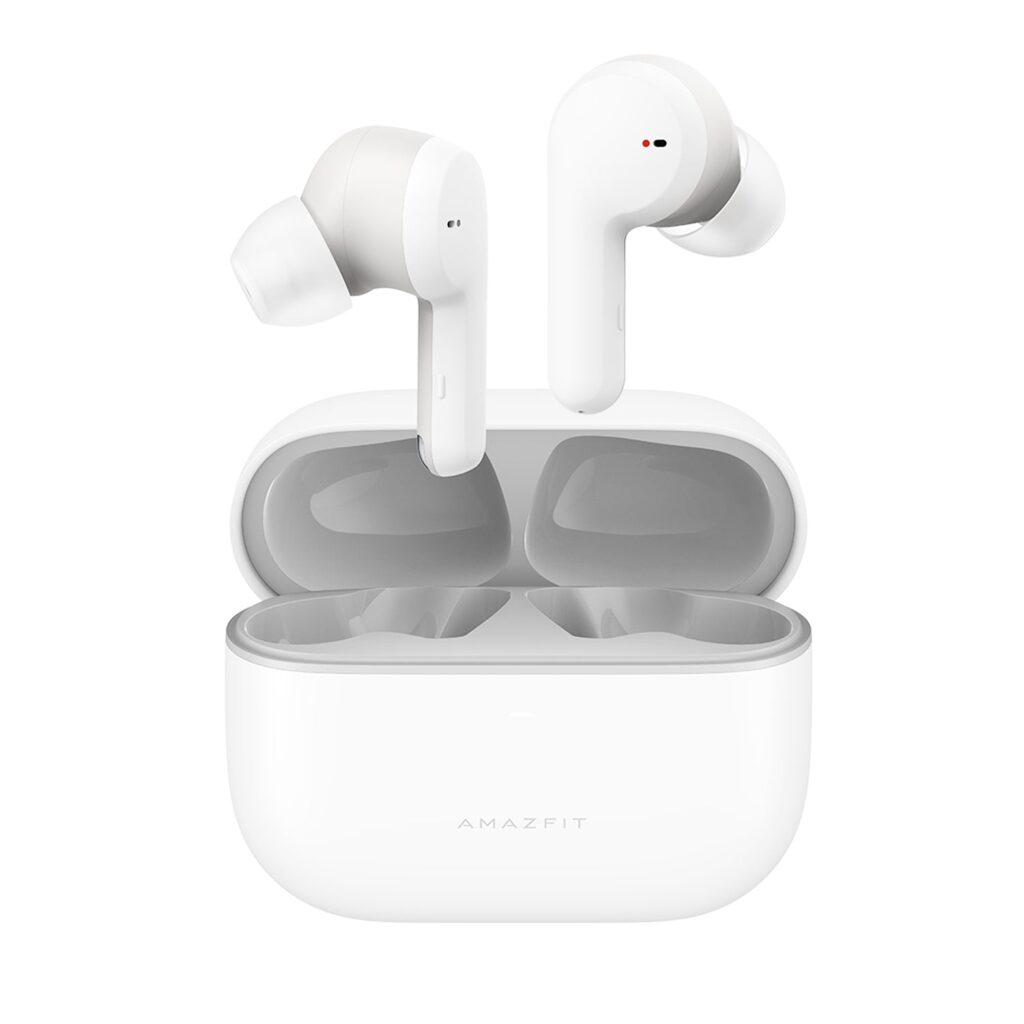Will Hearables Become Next Leading Fitness Tech?

The earphone & headphone industry is after your heart…and is slated to be valued at $33.4B by 2026
“How long before somebody figures out how to put a fitness tracker into a pair of earbuds so you never have to take your phone or smartwatch with you?” Tweeted @TechAltar last fall. Marton Barcza, the co-founder of Crrowd, a product review community, is a well-known tech YouTuber who creates analytical videos about tech companies.
Wearable technology has already become a part of everyday life, but the pandemic has caused a significant demand for hearables, or electronic in-ear wearables. As the number of people working from home increases, and as people become more health-conscious, consumers are opting for wearable tech that can serve as a convenience and a health tool. Companies are taking note and going even further, offering earbuds that measure biometrics like heart rate. Wearable health was on full display at CES 2022, with a reported 100+ health companies signed up to exhibit. With biometrics incorporated, could earbuds replace fitness watches?
Here’s how the pandemic changed the earbud game, the benefits of ear tech, the predicted market growth, and three products to watch.
Working from home & the rise of biometrics
“2020 was the year that hearables became the must-have device,” says Ramon T. Llamas, research director for International Data Corporation’s Wearables Team. Hearables were the largest category of devices with 64.2% share of shipments, whereas watches were 24.1%, according to IDC. Between the need for privacy and noise cancellation while working from home and health and fitness becoming front and center, the pandemic gave a boost for wearable tech companies.
Additionally, the rise of in-home fitness programs during the pandemic have worked in conjunction with wearables for many companies. And with consumers focused on health and warding off disease, IDC says that biometric tracking is quickly catching on.
“Beyond that, the proliferation of health sensors such as skin temperature, ECG, and heart rate tracking are allowing users and health professionals to better understand the onset and tracking of diseases,” says Jitesh Ubrani, research manager for IDC Mobile Device Trackers.
The ear as a gateway of accuracy
So what makes the ear an accurate spot on the body for wearable tech? The ear, as Wired pointed out, is an access point that “provides a clearer gateway into brain and body activity,” whereas wearables on the wrist can sometimes have inaccuracies.
“Hearable devices have the potential to provide vital information, including heart rate, blood pressure, temperature, pulse and even electrocardiography — the electrical activity of the heart, from a very unobtrusive position on the body,” says Stephen Brown.
The market for earphones will grow & include health sensors
According to a new market study published by Global Industry Analysts Inc., the earphone and headphone industry is anticipated to grow to $33.4 billion by 2026. The report, “Earphones and Headphones – Global Market Trajectory & Analytics,” explores the opportunities in the industry for earphones, as consumers are looking for tech advancements in fitness and gaming.
The report reveals that various companies are integrating improved features and sensors to measure body temperature, heart rate, pulse oximetry, blood pressure, electro-encephalogram and ECG.
Three companies to watch

- Jabra offers sports headphones with a built-in heart rate monitor with its Jabra Sport Pulse. Jabra measures a user’s heart rate through the inner ear, which the company says is clinically accurate via its third-party research. Users can also sync up the Jabra Sport Life app to monitor fitness activity. The app measures VO2, counts reps, predicts pace based on fitness level, and advises on rest and recovery.

- Amazfit Powerbuds Pro offers heart rating monitoring, posture reminders, 30 hours of battery life, and is water resistant. The earbuds recognize when a user starts running, providing real-time notifications every mile, and multi-scenario active noise cancellation.
- The AirPods Pro 2 is rumored to explore more fitness features, with CNET reporting that an Apple patent application from 2017 suggests possible functionality like measuring biometric signals through earbuds. Forbes discussed the potential for health and fitness sensors that will measure heart rate and monitor overall health. Apple has long been predicted to push further into the health and wellness sector, with 2022 being the year that it would make its advancements.
While wearable tech is here to stay and studies report positive outcomes, some experts suggest that companies may want to address the impact of motion and user comfort in the future. Advancements in hearables can even be woven in with hearing aids and further open the doors to daily health monitoring.
According to Barcza, companies can retain consumer loyalty through its tech health offerings.
“As components get miniaturized, I expect more functionality (e.g. biometrics or data connectivity), to be built directly into earbuds themselves in the future. This should also allow companies like Apple, Samsung and Xiaomi to further integrate their wearables into their ecosystems. If, for example, a consumer owns Samsung earbuds with a heart rate monitor that integrates with Samsung Health, they are more likely to stick with the brand for their other electronics purchases,” Barcza tells Athletech News.
Courtney Rehfeldt has worked in the broadcasting media industry since 2007 and has freelanced since 2012. Her work has been featured in Age of Awareness, Times Beacon Record, The New York Times, and she has an upcoming piece in Slate. She studied yoga & meditation under Beryl Bender Birch at The Hard & The Soft Yoga Institute. She enjoys hiking, being outdoors, and is an avid reader. Courtney has a BA in Media & Communications studies.



